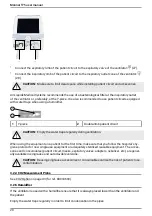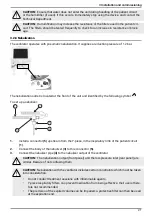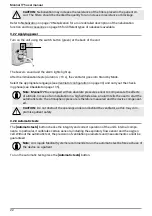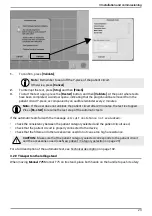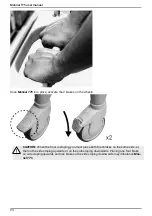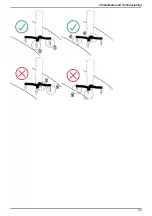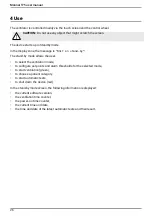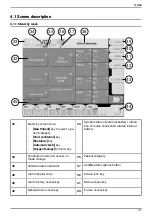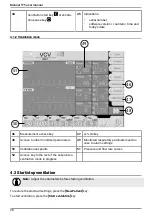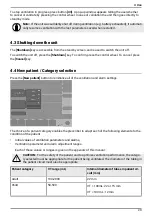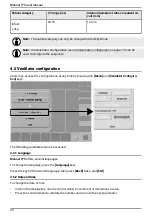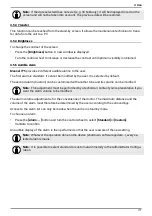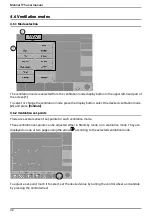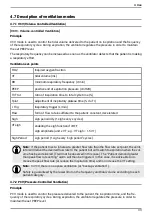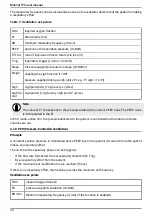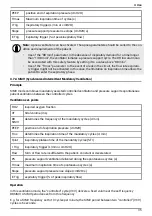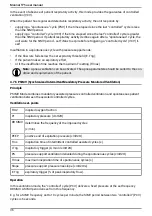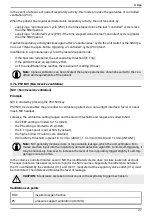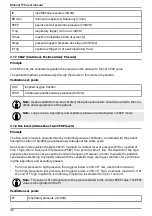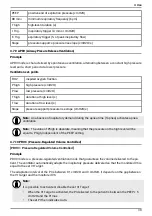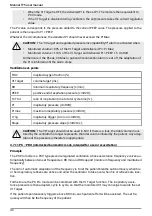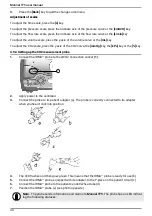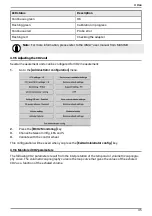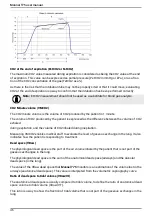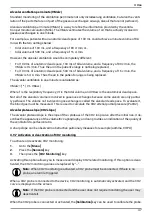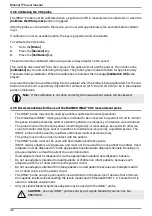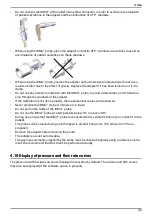
Monnal T75 user manual
The respiratory frequency can be increased as soon as the ventilator detects that the patient is making
a respiratory effort.
Table 1: Ventilation set-points
FiO2
inspired oxygen fraction
PI
tidal volume (mL)
RR
minimum respiratory frequency (c/min)
PEEP
positive end of expiration pressure (cmH2O)
TI/Ttot
ratio of inspiration time to total cycle time (%)
I.Trig
inspiratory trigger (L/min or cmH2O)
Slope
Pressure support pressure rise slope (cmH2O/s)
PIsigh
enabling the sigh function if ≠OFF
pressure supplied during a sigh (unit x PI; e.g.: PI sigh = 1.4 PI)
Sigh
sigh periodicity (1 sigh every x cycles)
Sigh Pe-
riod
sigh period (1 sigh every “sigh period” cycles)
Note:
The value of PI corresponds to the pressure added to the current PEEP value.The PEEP value
is incorporated in the PI.
In PCV mode, unlike VCV, the pressure delivered to the patient is controlled but the tidal and minute
volumes are not.
4.7.3 PCV (Pressure-Controlled Ventilation)
Principle
A constant positive pressure is maintained above PEEP level in the patient circuit each time the patient
makes an inspiratory effort.
The switch to the expiratory phase can be triggered:
•
If the flow rate falls below the set expiratory threshold (E. Trig),
•
By an expiratory effort from the patient,
•
If the maximum set insufflation time is reached (TImax).
If there is no inspiratory effort, the machine provides the minimum set frequency.
Ventilation set-points
FiO2
inspired oxygen fraction
PS
pressure support ventilation (cmH2O)
RR mini
Minimum respiratory frequency (c/min) (if the function is enabled)
34
Summary of Contents for MONNAL T75
Page 2: ......

